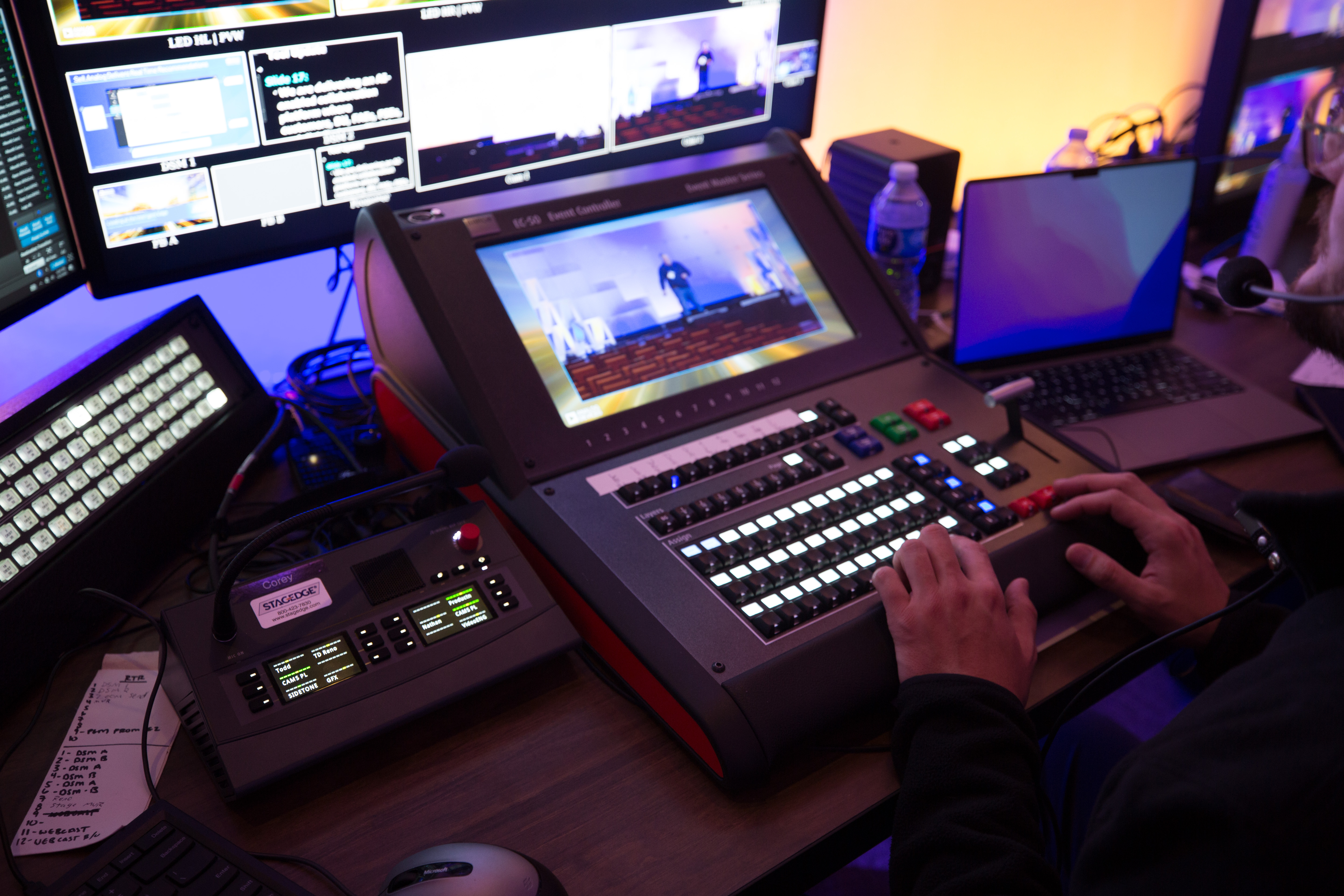After several decades of at-home internet and the more recent ability to stream shows on-demand from any device, today’s audiences have high expectations for streamed video content. They expect quick load times, uninterrupted streaming, sharp images, and clear audio. And these same expectations hold true for livestreamed virtual or hybrid events – especially in a post-Covid world, after several years of screen-time overload. Today, simply livestreaming a Zoom call doesn’t cut it. Video content needs to look great, sound great, and work seamlessly.
Check out these five tips for improving your audience’s experience during live virtual or hybrid events.
1. It Starts At The Source - Hardware Encoders
Don't rely on a computer with encoding software to stream your event -that's a recipe for disaster and is why Stagedge is brought to the table. Instead, only deploy the best in class bonded hardware encoders that are built for broadcast. Bonded hardware encoders reduce risk and eliminate a single point of network failure.
2. Take Advantage of 1080P-30
1080P is a standard HD video format used across industries. It stands for the dimensions of the aspect ratio: 1,920 pixels displayed across the screen and 1,080 pixels displayed down the screen. Most video content you see is displayed in this format. While 1080P content is often captured at 60 frames per second, we recommend opting for 30 frames per second for a few reasons. First, 1080P-30 provides the same high-definition resolution while using half the bandwidth. It also reduces buffering for audience members who don’t have a fast internet connection. Finally, 1080P-30 helps improve the end user quality and experience.
3. Help Attendees Optimize The At-Home Viewing Experience
There’s a lot you can do while producing an event to make it look and sound great. But you can’t control absolutely everything. On the other end of the line, figuratively speaking, it’s hard to know what your audience’s video-streaming setup looks like. With a little bit of advance planning, however, you can help attendees optimize their experience by sending out a few best-practice tips via email.
For example, since video streaming eats up a significant amount of bandwidth, advise audiences to close down other apps and minimize the number of devices using the same internet service. You can also ask them to check their sound and sign on a few minutes early so that if they do run into any issues, they have time to troubleshoot or get support without missing out on the content you worked hard to produce.

4. Hire Expert Technical Support
When running an event, the sheer number of moving parts means multiple opportunities for details to fall off track. A skilled project manager or producer can save you a lot of grief (and money!) by keeping all details organized and well-managed. But a project manager might not know what to do if the sound cuts out or an audience member is unable to connect. With a virtual event, the need for precision and perfection surrounding the technology is critical. By hiring specialists in the fields of video engineering, audio engineering, and livestream engineering, you can ensure a sophisticated experience for your audience.

5. Make Sure Presenters Have The Right Equipment
Many of us have sat through the awkward and unpleasant experience of a livestreamed event that goes awry because of bad technology. To ensure that your presenters will be able to communicate clearly – across time and space – you’ll need high-quality equipment to capture both video and audio, and the right technology to broadcast it to your audience. Proper lighting (including a key light), a microphone setup, and a “set” that furthers your brand and its mission will elevate your event to the next level. Do you need to ship any equipment to your presenters? A good-quality mic and a custom backdrop go a long way. Remember, the medium is the message.

Partner For Success
Planning a hybrid or virtual event is hard. Not only do you have to create the content, choose the speakers, help them prepare, and register the attendees – but there is an entire universe of technology that needs to be executed exactly right for the event to go off without a hitch. Partnering with an experienced event production team significantly reduces stress (and errors!), saves money, and results in a more professional and successful event. Check out Stagedge's event management offerings to learn more about how we can help.
